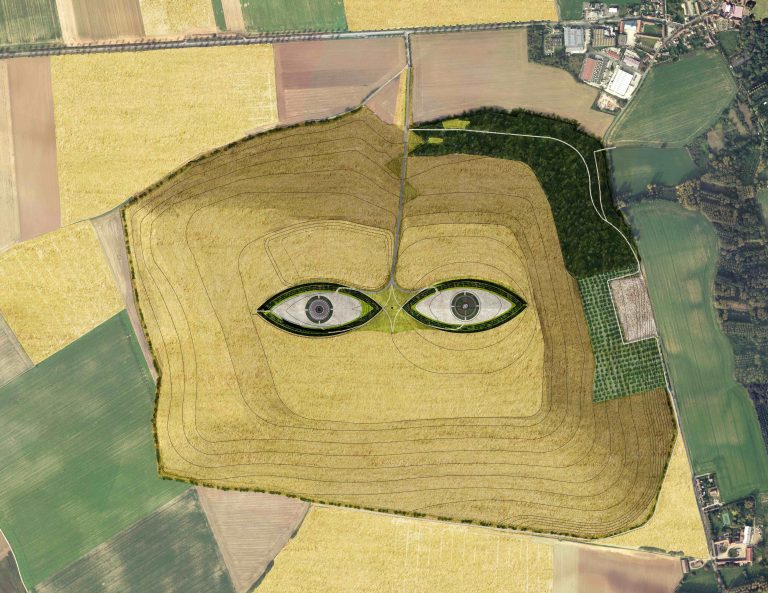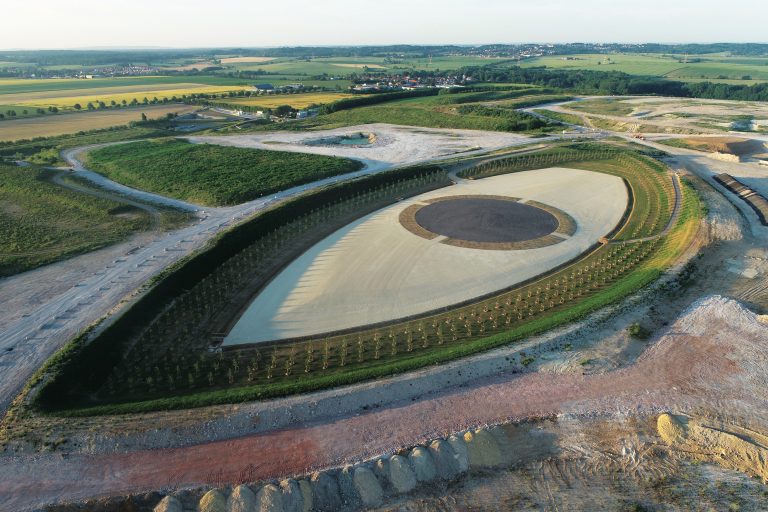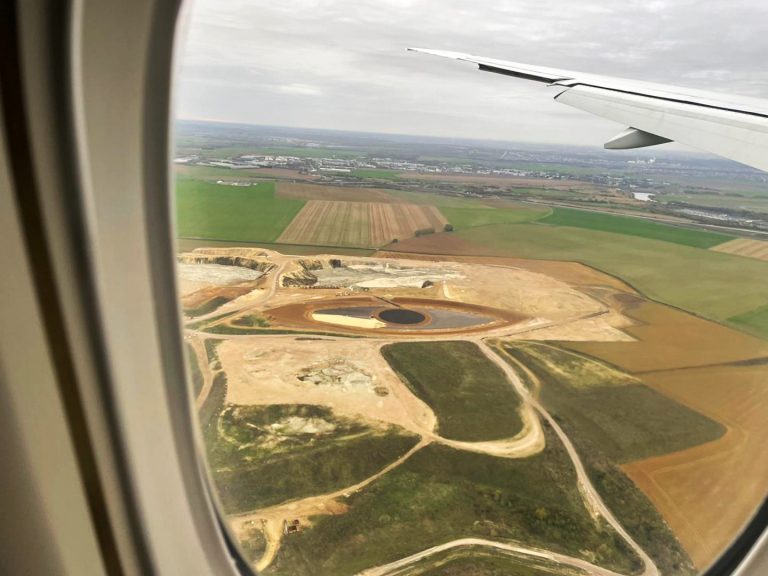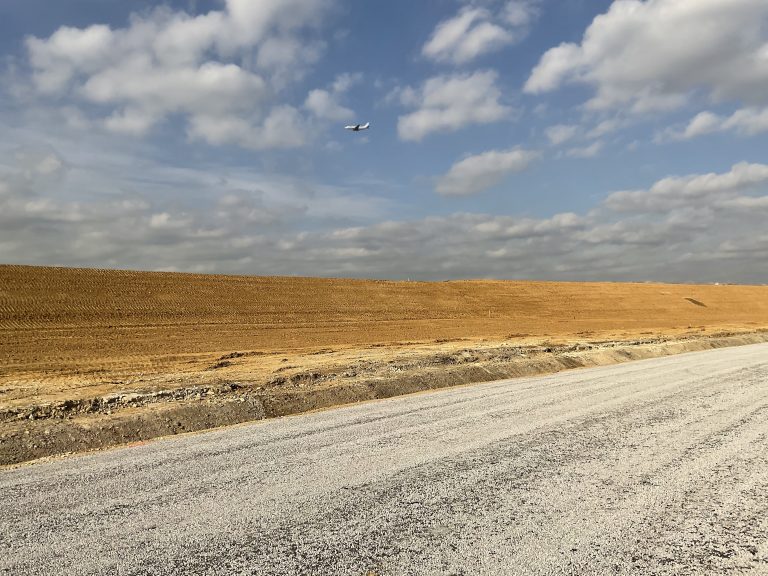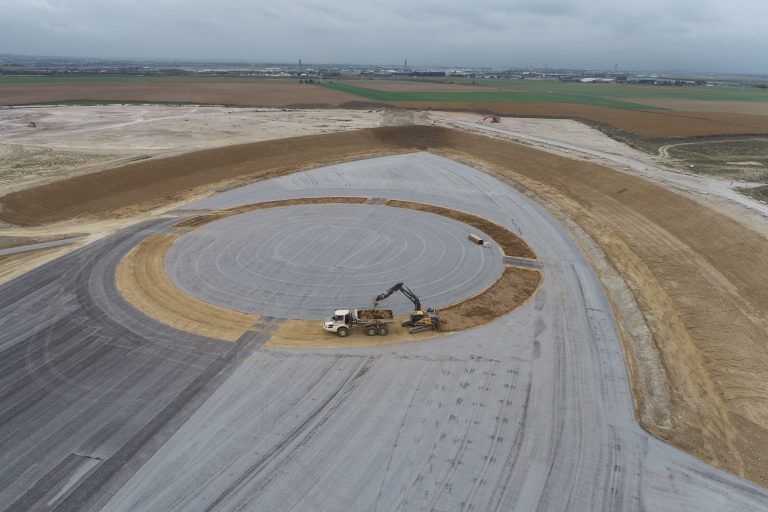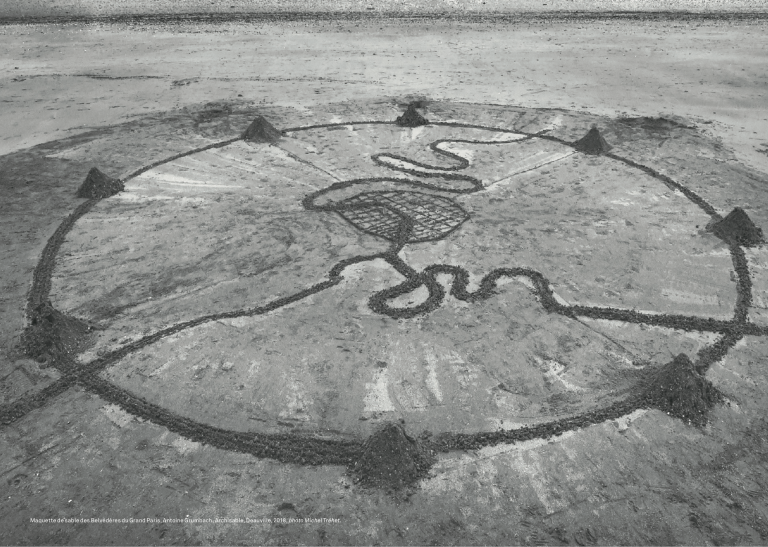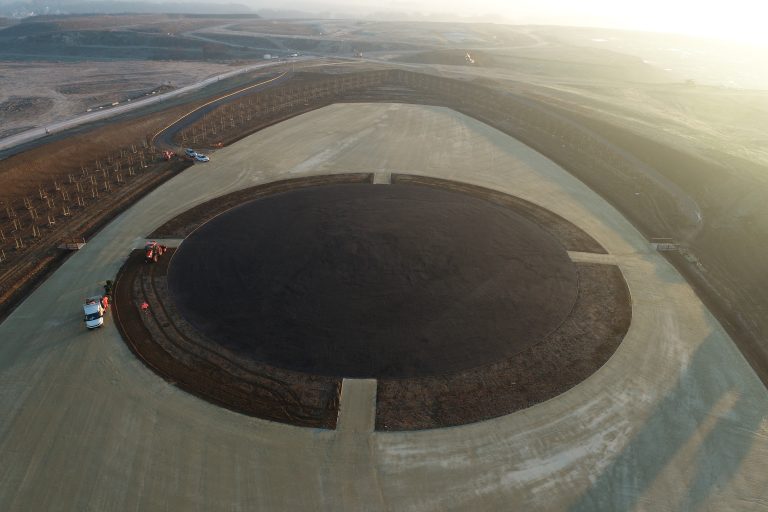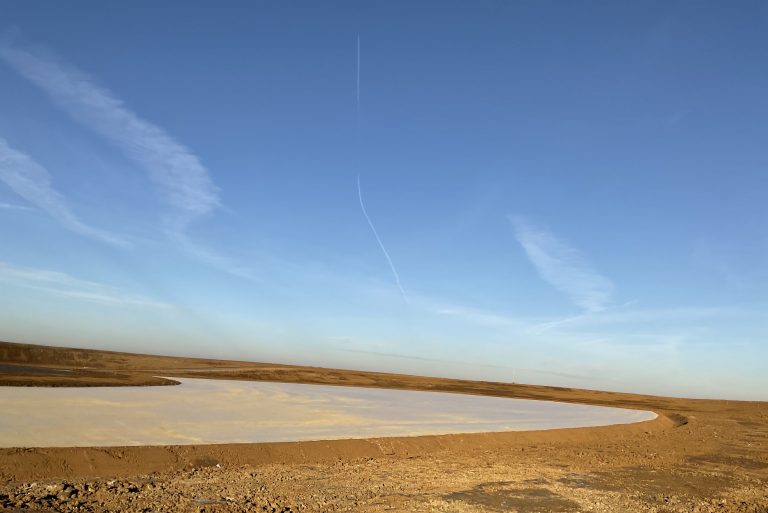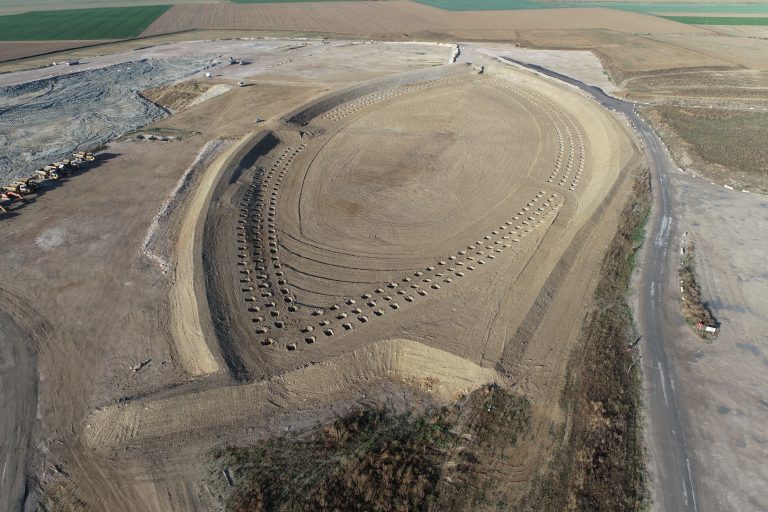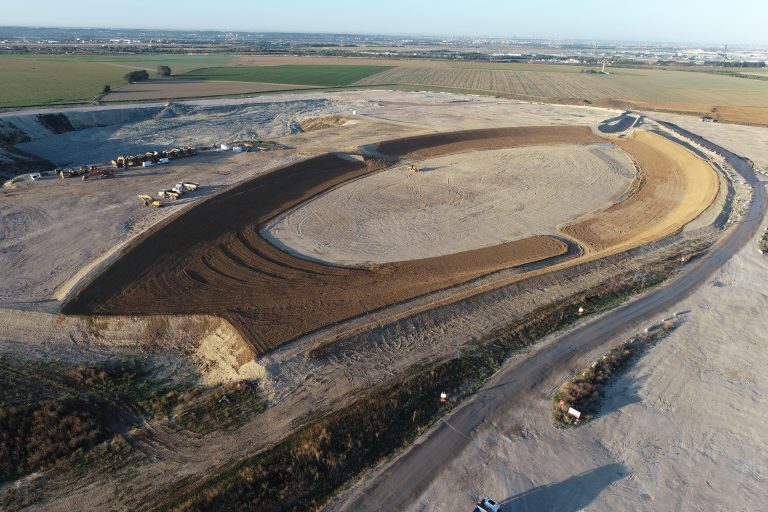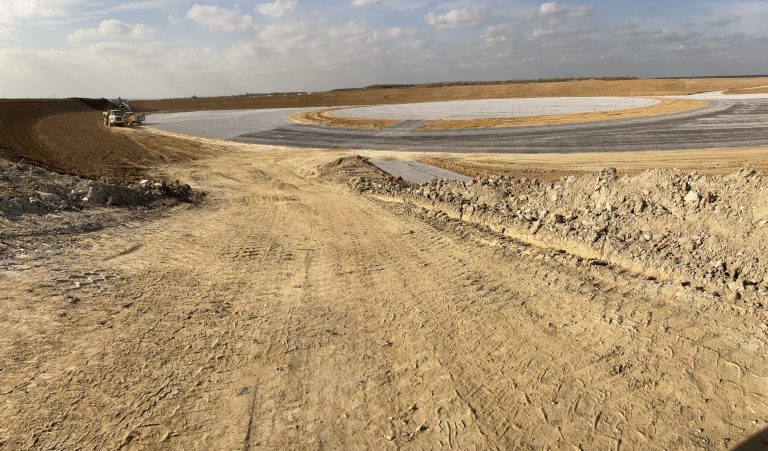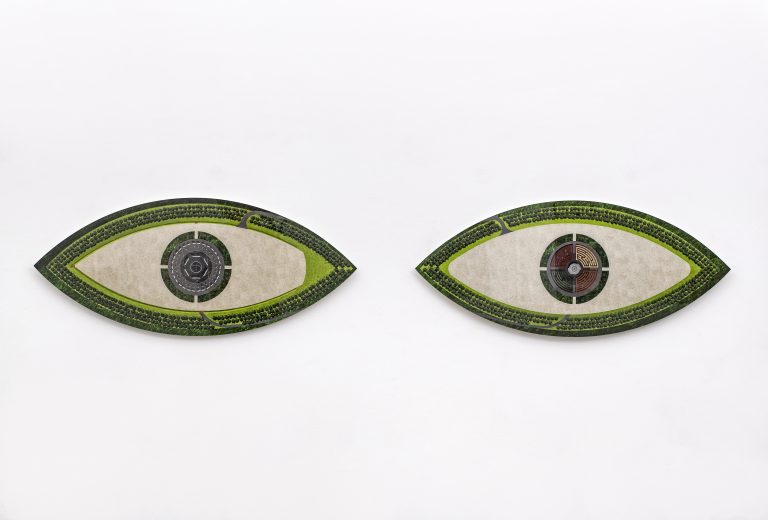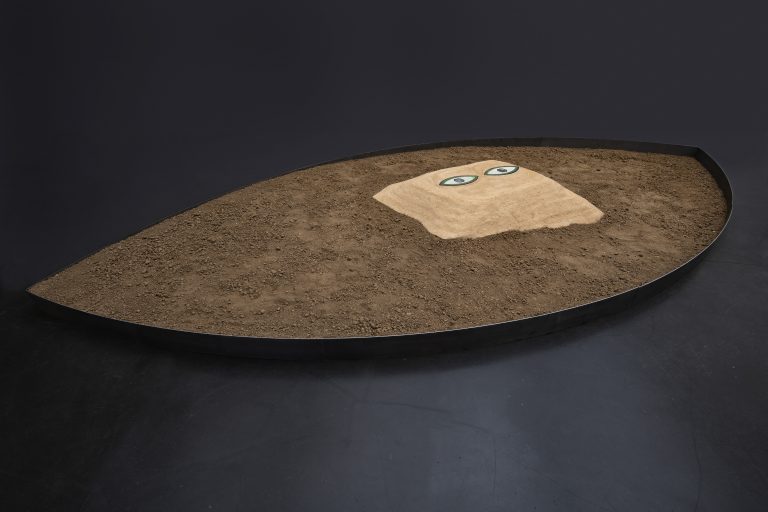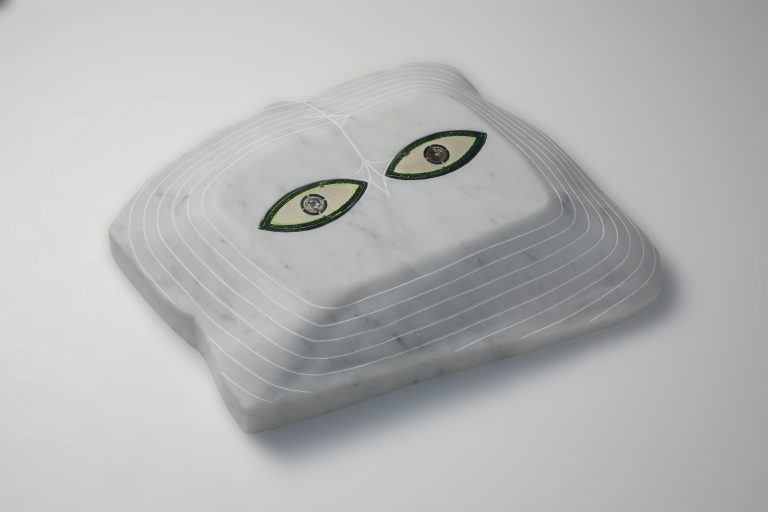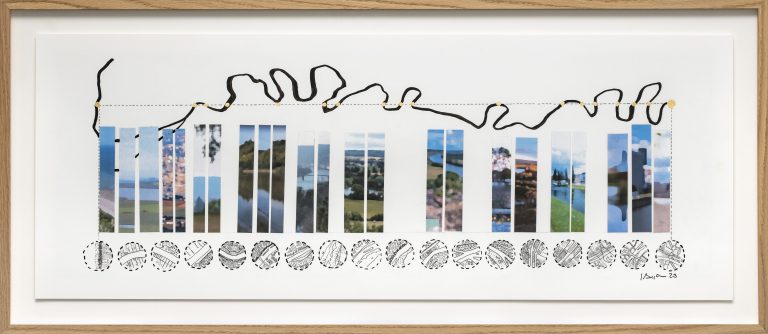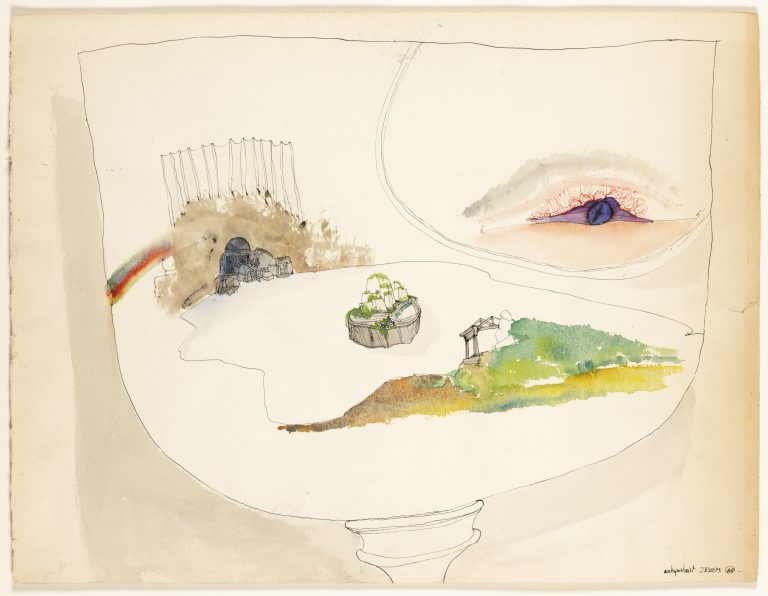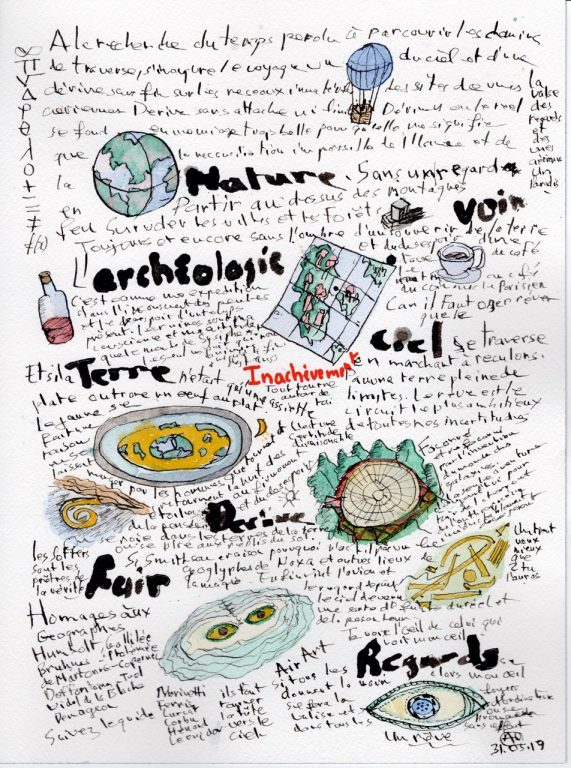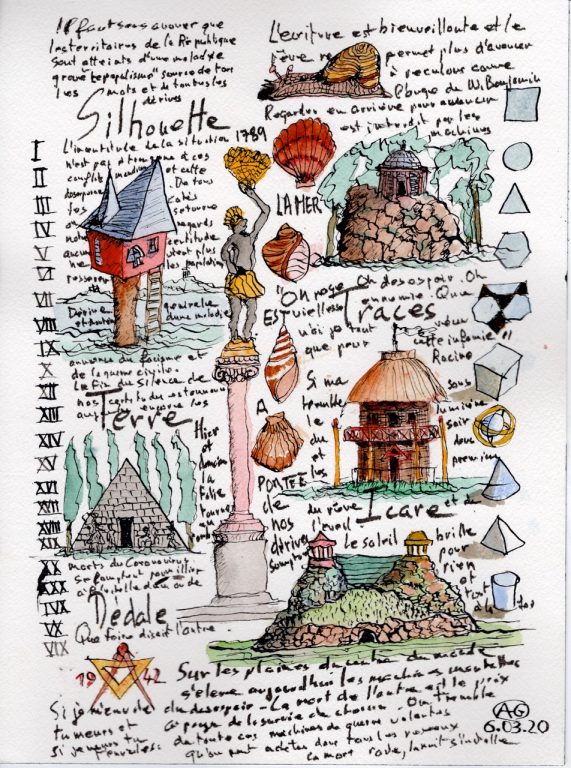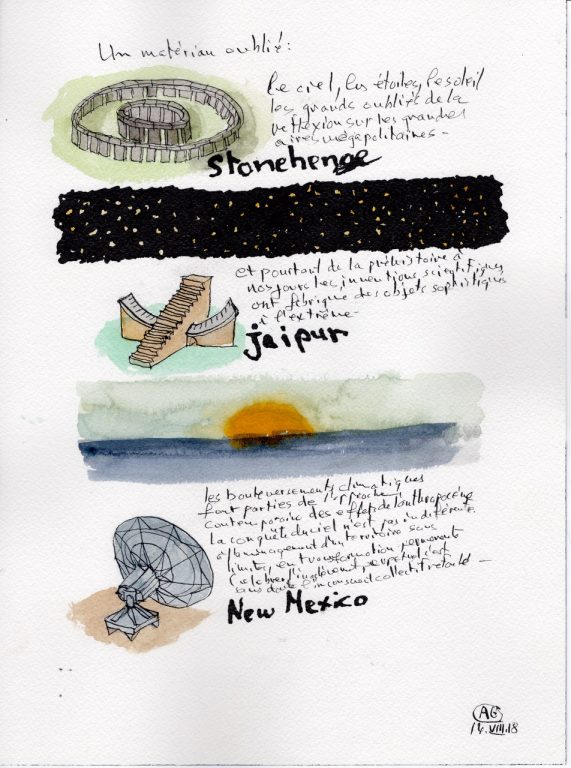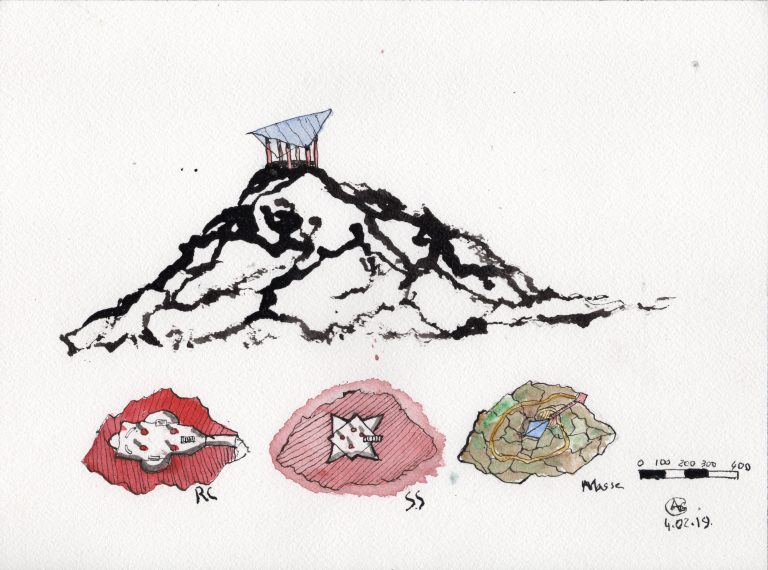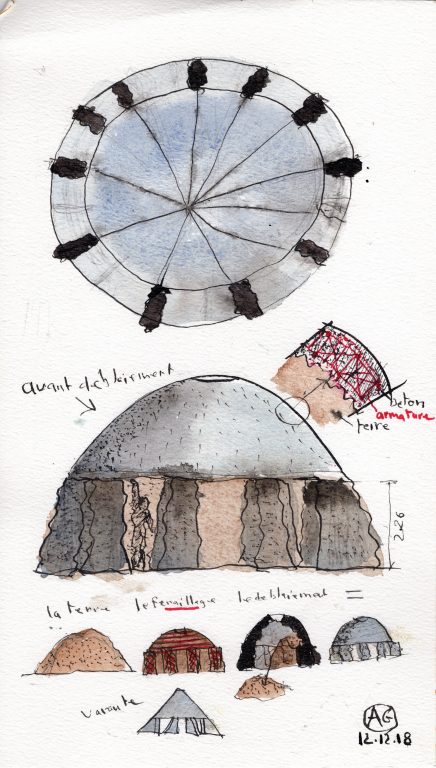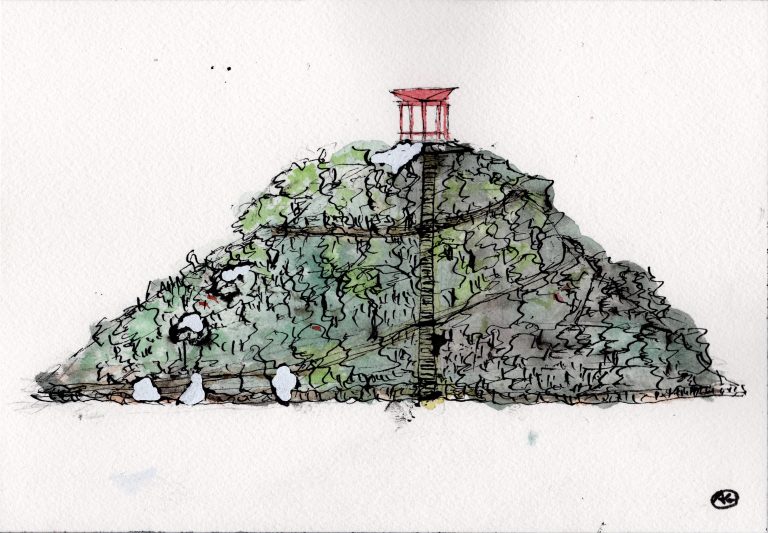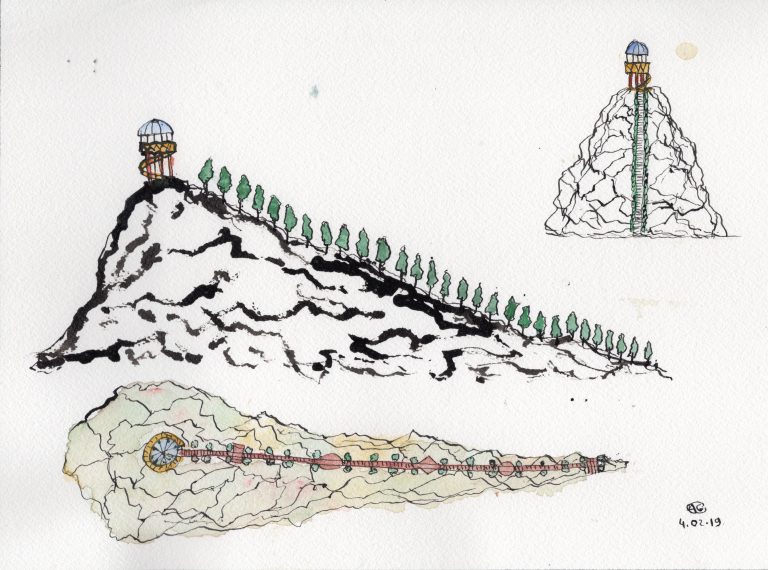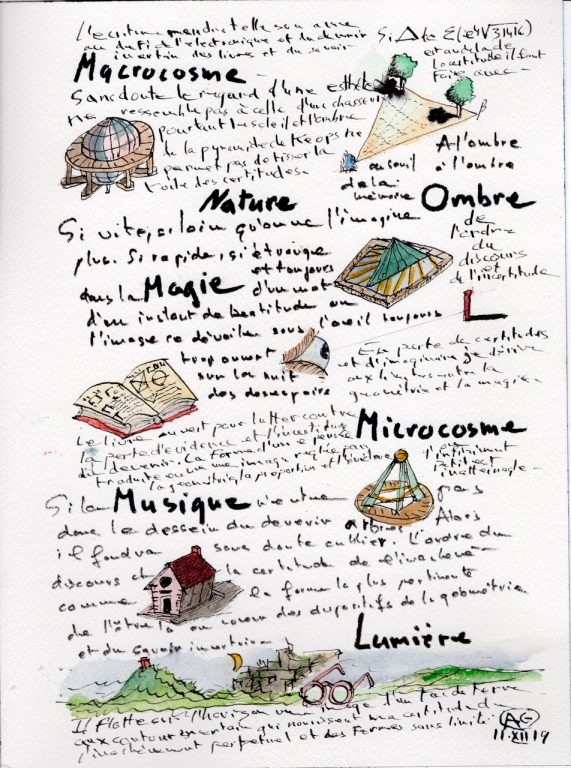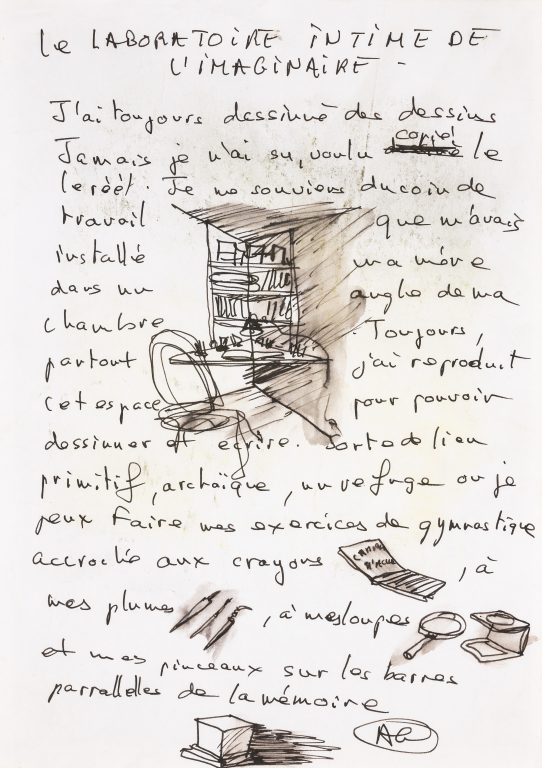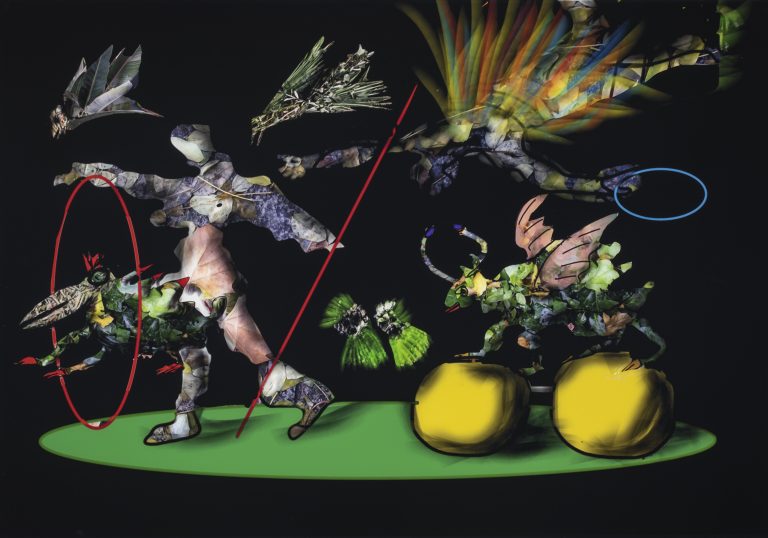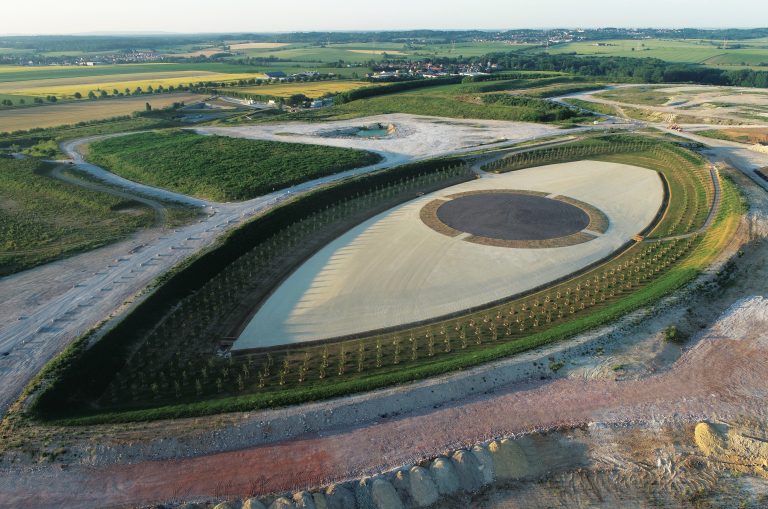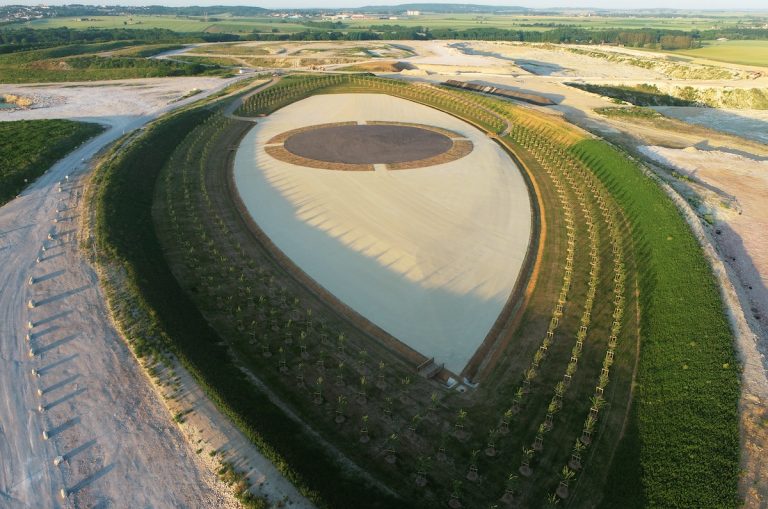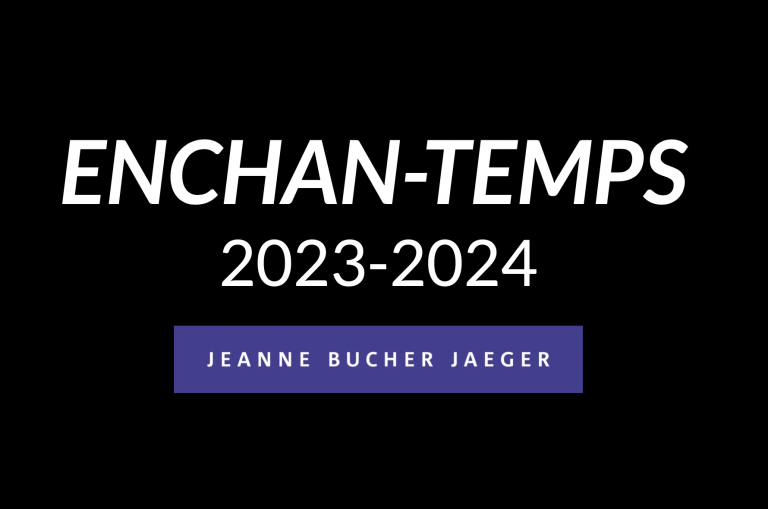16.09.2023 — 13.01.2024
Enchan-Temps : The Eyes of the Sky [Les Yeux du Ciel]
Antoine Grumbach
Marais Space
Past
© ECT mai 2023
Villeneuve-sous-Dammartin, France
© ECT mars 2023
© ECT mars 2023
© ECT mars 2023
Image by Antoine Grumbach, AGTERRITOIRES
Deauville, France
Photograph by Michel Tréhet
Villeneuve-sous-Dammartin, France
© ECT mai 2023
Villeneuve-sous-Dammartin, France
Photograph by ECT
Villeneuve-sous-Dammartin, France
© ECT mars 2023
Villeneuve-sous-Dammartin, France
© ECT mai 2023
© ECT mars 2023
© ECT mars 2023
Watercolor and India ink on paper
9 x 12,2 in
Photograph All rights reserved
© ECT mars 2023
17 interventions at the intersection of the Paris axis and the Seine
Véronique Jaeger is pleased to announce the second part of ENCHAN-TEMPS cycle, the exhibition “The Eyes of the Sky” [Les Yeux du Ciel] devoted to Antoine GRUMBACH.
Antoine Grumbach (1942) is an artist-architect and urban designer who graduated from the Ecole des Beaux- arts in Paris in 1967 and received the Grand Prix National d’Urbanisme et d’Art Urbain in 1992. His international achievements are countless, as are his major architectural and urban planning projects, which include the Cours Mirabeau in Aix-en-Provence, the new inhabited bridge over the Thames in London, as well as the restructuration of Shanghai’s historic district, Greater Moscow, the Paris tramway and the Greater Paris “Seine Métropole” project… For over 40 years, he taught at the Ecoles nationales d’architecture de Paris-La Villette et Belleville, the Ecoles des ponts et chaussées and the universities of Columbia, Harvard, Princeton and Toronto, where he lectured on urban semiology. In addition to his international experience as an urban artist-architect, Antoine Grumbach became close to the great structuralist intellectuals from ‘67 to ‘69 at the Ecole Pratique des Hautes Études, and attended Roland Barthes’ semiotics courses on the linguistics of discourse. Along with students from the ENSBA, including Christian de Portzamparc, he took part in Michel Foucault’s lectures at the Collège de France, and attended Umberto Eco’s semiotics seminars in Milan. In this way, he explored the relationship between form and meaning, sign and perception. The relationship between city and text lies at the heart of his writings and works (La Ville est un livre in the MNAM-CCI collections). Antoine Grumbach is quickly recognized as one of France’s pioneers in the study and consideration of public space. Influenced as much by Structuralism as by Situationism, Grumbach’s work is based on respect for significant traces of tabula rasa, the re-semantization of existing spaces: «the dream has its point of departure in reality and is realized in it».Well-known as an urban fixer, Antoine Grumbach sees the city as continuous, infinitely complex and perpetually unfinished, envisioning its development and renewal without necessarily anticipating its demolition or replacement. He sees modernity not as a rupture or restoration, but rather as a skillful interweaving of past and present.
Similar to Land Artists as Robert Smithson, Michael Heizer, Robert Morris or Dennis Oppenheim, Antoine Grumbach conceived a work of Aerial Art, entitled Les Yeux du Ciel [The Eyes of the Sky], a gaze at Earth that can be visited both from the inside as well as the outside since it is offered up to the sky, in the manner of the Nazca Lines, a group of geoglyphs in the desert of Peru. Starting from Antoine Grumbach’s principle I see the eye of the one who sees my eye, this architect-artist contributes to the Millenary history of the great terrestrial tracings visible from space.
Les Yeux du Ciel are located at Villeneuve-sous-Dammartin, on the axis of the runways of the Roissy-Charles de Gaulle airport, on a plateau measuring 1.6 kilometers long, 800 meters wide and 30 meters high. It is one of the largest sites for the reuse of excavated soil in the construction industry developed by the company ECT. Driven by the belief that inert and excavated Earth from construction sites throughout his life as an architect is not waste, but a noble and fertile material that can be recycled, Grumbach approached the company
ECT, which manages this soil, with a proposal for a work of Aerial Art that reconciles circular industry, landscape and monumental art. On landing as well as on takeoff, airline passengers will see two wide-open eyes celebrating the welcomes and farewells of travelers to the Paris region. The two eyes, each measuring 400 x 170 meters, will be surrounded by trees in the middle of cultivated fields, on an open-air / outdoor theatre represented by a mound laid out in grassy tiers. An artwork made by Man with the materials of Earth and for the Earth.
The first Western eye, Icare, will be inaugurated in Automn 2023 in conjunction with this gallery exhibition. The eye has been imagined as an open-air museum celebrating the union of earth and sky, accompanied by a collection of large images of geoglyphs from around the world. This site will become the world’s first museum of aerial landscape art. The design of the iris pays tribute to aeronautical flight, and is directly inspired by the prehistoric monument at Stonehenge in Britain. Two sets of panels in concentric circles present, the exploration of the sky from antiquity to the present day; and a selection of large reproductions (7.20 x 3.60 meters) of Aerial Landscape Art, from prehistoric geoglyphs to the most recent examples. In the center, a recessed half-dome shows a map of the sky.
The second Eastern eye, Dédale, will open in 2025-26. The Eastern iris will provide a lookout point, an observatory of the sky. Surrounding the tree-lined belvedere that overlooks them will be four labyrinths made of the materials used to build the plateau where they are located and a garden labyrinth that echoes the tradition of parks. The viewpoint in millstone will be equipped with a table map in enameled lava on its periphery, with a description of the landscape and the history of the site and beyond, literary quotations and sketches. In the center, a Ginkgo Biloba, a tree symbolizing resilience and longevity, as the first tree to grow back in Hiroshima a year after the nuclear bomb destroyed the city.
As part of this artist-architect’s exhibition Les Yeux du Ciel, the gallery is also presenting sculpted clay and marble models of the eyes from this work produced in painted ceramic tiles or azulejos by the Viúva Lamego manufacture in Portugal. Founded in Lisbon in 1849, the historic Viúva Lamego workshop is one of the world’s leading producers of azulejos tiles (Vieira da Silva, Rem Koolhaas, Yayoi Kusama, Hervé di Rosa, Antonio Segui, Maria Ana Vasco Costa, Joana Vasconcelos, Zao Wou Ki…).
For a sculpted model made in raw earth, the gallery called on another extraordinary craftsman, Rachid Mizrahi, a master craftsman specializing in earthen constructions who worked with Dani Karavan on his first earth sculptures starting in 2013; he has also collaborated with Celeste Boursier- Mougenot for the Venice Biennale in 2015 and recently designed furniture for the train station in Nîmes with the Canopée agency. The marble edition of Les Yeux du Ciel was created in collaboration with Giorgio Angeli, a prestigious contemporary workshop specializing in stone masonry and stonecutting founded in Tuscany in the 1970s. The many international artists who have worked with the Giorgio Angeli studio include Isamu Noguchi. Antoine Grumbach’s exhibition places the gesture of the human hand at the heart of the elements of nature and the living world in many different forms of expression: Land art/Aerial art,Environmental art, arts and crafts, sculpture… as well as the materials used to create his works: earth from the Ile-de-France, wood, clay for the azulejos, marble…
The exhibition also features the drawings, photographs and films from Les Yeux du Ciel, as well as a selection from the 105 drawings from the Encyclopédie Vagabonde.
(…) I’ve always been fascinated by the encyclopedia of Diderot & d’Alembert: the countless plates and technical drawings, accompanied by erudite texts, make up a kind of collective memory that fascinates me. (…) This aspect of incompleteness captivates me, because today all knowledge is incomplete and fragile (…) Faced with the avalanche of images evoked by these reflections, I tried to take them by the hand, the hand that writes and draws, to conceive of images, which are without subject, which do not make a statement, which are open to all possible interpretations, in a sense letting my spirit wander. (…) Ruins, the ‘primitive hut,’ imaginary constructions and piles of earth often find their way into my drawings (…), says the artist.
The work of Antoine Grumbach and his drawing of the eyes, hills and convolutions of the Seine on a surface of earth reflects the same creative process as that of drawing on a sheet of paper, Tracing, Drawing Writing. The creative process, whether in a city, in a landscape or in the private space of a sheet of paper, consists in the elaboration, composition, evocation and invention of an original work of art, the fruit of both the knowledge acquired in different fields and of wandering imaginations in automatic writing open to multiple possibilities.
In Partnership with ECT and the Films d’ICI, two movies by Richard Copans and Alain Nahum entitled ‘The Eye of the Sky” have been produced for the gallery and will be shown during the exhibition in order to introduce a view from the sky of the first eye, ICARE, as well as a short interview with Antoine Grumbach. Les Films d’Ici is a collective of producers united around a core principle – creative documentary – in the service of strong, politically, socially and aesthetically engaged content (Laurent Chevallier’s Transantarctica, Robert Kramer’s Route One USA, Ari Folman’s Waltz with Bachir, Nicolas Philibert’s Être et avoir, Pierre Soulages by Stéphane Berthomieux, Bonnard by Alain Cavalier, Picasso, Gilot, le minotaure et la cavalière by Sylvie Blum, Roland Barthes by Thierry Thomas, Fabienne Verdier by Mark Kidel, Edgar Morin by Jean-Michel Djian…
The exhibition will also feature two other major projects in progress:
• The Belvédères du Grand-Paris are artificial hills in a 30-kilometer circle around Paris, the “lungs” of the Paris metropolis, with Notre-Dame at its center. The creation of this work reveals a circular economy approach to excavated earth. Artificial hills, a barometer of the action taken by the municipal administration, generate a system of symbolic places in the Grand Paris metropolis. The importance of the urban flow of materials is reflected in this series of “green oases” around which urbanization will be able to spread. Located on the boundary between urban areas and farmland and forests, these lookouts offer a variety of landscapes to discover. Each hill will be inscribed like a monumental Janus head, revealing the fragile limits between the two gazes. Les Yeux du Ciel constitutes the first belvedere around Paris. These hills were initially drawn and sculpted in the wet sand of the beaches at Deauville as ephemeral artworks, then photographed before being destroyed by the wind, the sea or passers-by. Photographs and drawings of these belvederes will be exhibited.
• The Axe de Lumière, imagined by landscape architect Léna Soffer-Grumbach, extends the historic axis from Paris to Le Havre. Sites where the line and the point, inventions of the human spirit, intersect the meandering Seine, will be the places to discover these landscapes and their light through the eyes of 21st-century artists. The river follows its course, following the contours of the land, the historic axis of Paris dotting its way to the sea, and the meeting points make up the Axe de Lumière (Axis of Light), which inscribes a new monumentality in the Seine valley. The work of art on a territorial scale is set up at the 18 points: at night, each of these halts will emit a vertical laser beam that will punctuate an axis of light from Paris, city of light, to the sea, inscribing a new monumentality in the Seine valley. During the day, the artistic project will create a common theme along the axis, celebrating each site’s genius of place, its light and the valley’s diverse landscapes of forests, ports, fields, quarries, industry, towns and villages. Sustainable energies – sun, water and wind – will be mobilized to power these creations. The Axe de Lumière, a work of art on the scale of the region, proposes a rediscovery of the Seine’s landscapes, based on Michel Corajoud’s definition of landscape as the meeting of geometry and geography.
Les Yeux du Ciel is the mature work of an artist-architect-urban planner, one who combines knowledge, experience and an inner vision with the projection, perpetual movement and globality of an outer vision, opening up the verdant and artistic perspectives of a majestic work of art anchored in the sustainable development of a boundless Nature-Culture relationship. Purifying the gaze in the search for content and depth, between memory and dream, foundation and projection, to reveal all the actuality of a living work of art, intrinsically open to the relationship between Heaven and Earth. By expanding his outlook and our own, Antoine Grumbach offers the Earth a majestic face: in the Anthropocene Epoch, he invites us to redefine our condition as sapiens, to take flight into space to see how much Gaia – in her intrinsic natural beauty – offers a most emblematic surface, made of all that man has been able to draw, paint, sculpt, build or invent.
Véronique Jaeger
The exhibition Les Yeux du Ciel, is the second part of a cycle of three exhibitions in 2023-24 entitled ENCHAN-TEMPS, conceived by Véronique Jaeger, reflecting the gallery’s commitment to questions of sustainable development and environment and to a reflection on space, movement and memory, in the work of artists whose monumental creations are both deeply rooted in sites of memory on Earth, but is also revealed in their fullness and monumentality when seen from above, from Heaven. Artists whose work, unique and profound, made by and for human beings, is fundamentally visionary and inherently valuable.
At a time when we are facing fundamental questions for the future of humanity, including Artificial Intelligence with all its advantages and dangers, global warming and the urbanization of cities transformed into megacities, the gallery is more than ever committed to defending artists who propose a world based on notions of sustainable development, balance and peace, combining in their works past, present and future visions, a world that embodies the major challenges of the 21st century.
This cycle of exhibitions entitled ENCHAN-TEMPS, inaugurated in February 2023 with the exhibition Habiter la Terre – Archéologie Intérieure by Dani Karavan and Jean-Paul Philippe, continues in mid-September with Les Yeux du Ciel by Antoine Grumbach, and will close with the exhibition Le Souffle d’Ici – L’Eau de là [The Breath of Here – The Water Beyond] by Susumu Shingu, sculptor of water and wind with whom the gallery has been collaborating since 2006, who created a Wind Museum in Japan and recently exhibited at the Château de Chambord to celebrate the 500th anniversary of Leonardo da Vinci’s death. Susumu Shingu has exhibited with Renzo Piano at the Nakanoshima Art Museum in Osaka, Japan, entitled Parallel Lives, which opened on July 12; they have completed over a dozen projects together. The exhibition also provided an opportunity to delve deeper into Susumu Shingu’s research into perpetual movement based on the natural energies that drive his sculpture, with drawings, paintings, sculptures and models of his major projects.
The Eyes of the Sky [Les Yeux du Ciel] exhibition is being presented in a different configuration at the Espace Musées of Paris Aéroport, Paris-Charles de Gaulle from 29 January to 31 May 2024.
Diasec
42,8 x 100 cm
©Jean-Louis Losi
Clay, metal and ceramics
37 x 629 x 283 cm
Edition 1/3
©Jean-Louis Losi
Marble and ceramics
Edition 1/8
© Nicola Gnesi
Polystyrene, acrylic resin, wood, pins, copper foil, clay pigments
65 x 220 x 5 cm
©Jean-Louis Losi
Print on paper, gouache, ink and copper leaf, collage on paper
38 x 100cm
©Jean-Louis Losi
Gouache, copper leaf on paper, blue background printed on paper
38 x 100 cm
©Jean-Louis Losi
Watercolor and India ink on paper
50 x 65,5cm
©Jean-Louis Losi
Watercolor and India ink on watercolor paper
12,2 x 9 in
Encyclopédie Vagabonde Serie
Photograph All rights reserved
Watercolor and India ink on watercolor paper
12,2 x 9 in
Encyclopédie Vagabonde Serie
Photograph All rights reserved
Watercolor and India ink on watercolor paper
12,2 x 9 in
Encyclopédie Vagabonde Serie
Photograph All rights reserved
Watercolor and India ink on paper
12,2 x 9 in
Photograph All rights reserved
Watercolor, pencil and India ink on paper
7,5 x 12,9 in
Photograph All rights reserved
Watercolor, tipex and fountain pen on paper
10,2 x 7 in
Photograph All rights reserved
Watercolor and India ink on paper
12,2 x 9 in
Photograph All rights reserved
Watercolor and India ink on watercolor paper
12,2 x 9 in
Encyclopédie Vagabonde Serie
Photograph All rights reserved
Watercolor and fountain pen on paper
21 x 29,7cm
©Jean-Louis Losi
Unique digital drawing on diasec
84 x 120 cm
©Jean-Louis Losi
Diasec
42,8 x 100 cm
©Jean-Louis Losi
Clay, metal and ceramics
37 x 629 x 283 cm
Edition 1/3
©Jean-Louis Losi
Marble and ceramics
Edition 1/8
© Nicola Gnesi
Polystyrene, acrylic resin, wood, pins, copper foil, clay pigments
65 x 220 x 5 cm
©Jean-Louis Losi
Print on paper, gouache, ink and copper leaf, collage on paper
38 x 100cm
©Jean-Louis Losi
Gouache, copper leaf on paper, blue background printed on paper
38 x 100 cm
©Jean-Louis Losi
Watercolor and India ink on paper
50 x 65,5cm
©Jean-Louis Losi
Watercolor and India ink on watercolor paper
12,2 x 9 in
Encyclopédie Vagabonde Serie
Photograph All rights reserved
Watercolor and India ink on watercolor paper
12,2 x 9 in
Encyclopédie Vagabonde Serie
Photograph All rights reserved
Watercolor and India ink on watercolor paper
12,2 x 9 in
Encyclopédie Vagabonde Serie
Photograph All rights reserved
Watercolor and India ink on paper
12,2 x 9 in
Photograph All rights reserved
Watercolor, pencil and India ink on paper
7,5 x 12,9 in
Photograph All rights reserved
Watercolor, tipex and fountain pen on paper
10,2 x 7 in
Photograph All rights reserved
Watercolor and India ink on paper
12,2 x 9 in
Photograph All rights reserved
Watercolor and India ink on watercolor paper
12,2 x 9 in
Encyclopédie Vagabonde Serie
Photograph All rights reserved
Watercolor and fountain pen on paper
21 x 29,7cm
©Jean-Louis Losi
Unique digital drawing on diasec
84 x 120 cm
©Jean-Louis Losi
practical informations
Marais Space
5 rue de Saintonge
75 003 Paris – France
T +33 1 42 72 60 42
F +33 1 42 72 60 49
info@jeannebucherjaeger.com
opening hours
Tuesday to Friday
from 10 am to 7 pm
On Saturday from 11 am to 7 pm
